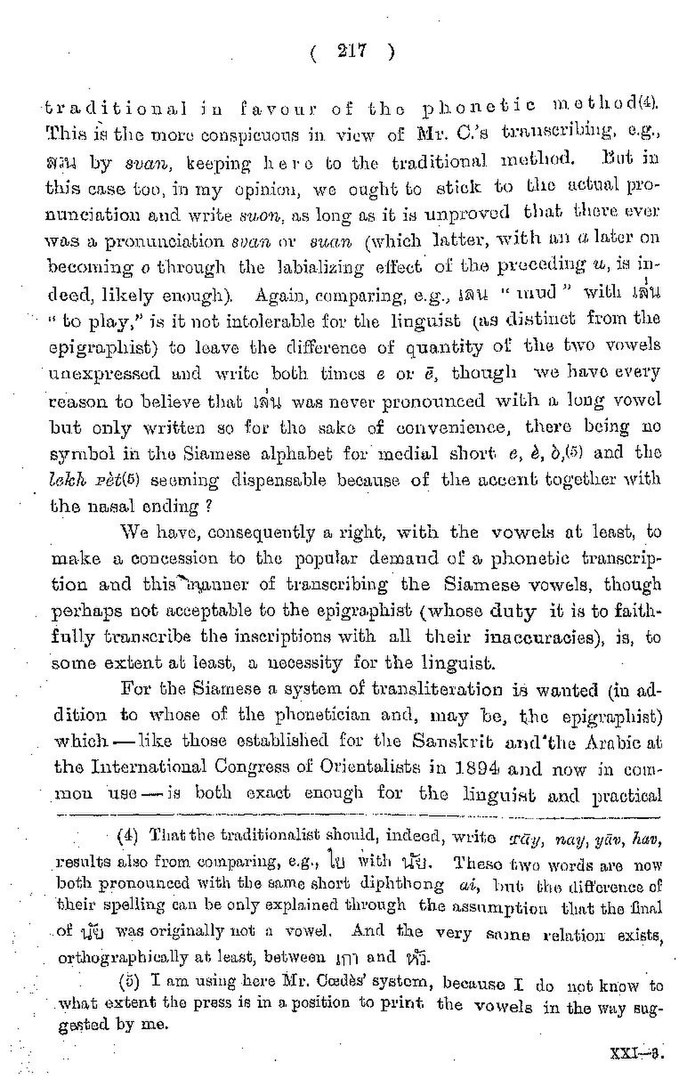( 217 )
tradition al in favour of tho phonetie method(4), This is the more conspicuous in view of Mr. C's trnuscribing, e.g., But in Nau by svan, keeping here to the traditional metliod. this case too, in my opiniou, we ought to stick to thhe actual pro- nunciation and write suon, as long as it is unproved that there ever Was a pronunciation svan or suan (which latter, with an a later on becoming o through the labializing effect of the preceding u, is in- deed, likely enough). Again, comparing, e.g., iau "mud " witlh 1nu * * to play," is it not intolerable for the linguist (as distinct from the epigraphist) to leave the difference of quantity of the two vowels unexpressed mnd write both times e or ē, thouglh
we have every reason to believe that lau was never pronounced with a long vowel but only written so for the sako of convenience, there being no symbol in the Siamese alphabet for medial short e, è, d,(5) and the lekh rèt(5) seuming dispensable because of the accent together with the nasal onding ? We have, consequently a right, with the vowels at least, to make a concession to the popular demand of a phonetie transcrip- tion and this mwnner of transcribing the Siamese vowels, though perhaps not acceptable to the epigraphist (whose duty it is to faith- fully transcribe the inseriptions with all their ina ccuracies), is, to some extent at least, a uecessity for the linguist.
For the Siamese a system of transliteration is wanted (in ad- dition to whose of the phonetician and, may be, the epigraplist) which -like those established for tlhe Sanskrit and'the Arabic at the International Congress of Orientalists in 1894 and now in com- uge -- is both exact enough for the linguist and practical mon
(4) That the traditionalist should, indecd, writo ray, nay, yāv, hav, results also from comparing, e.g., lu with . Theso two words are now both pronounced with the same short diphthong ai, bnt the diference of their spelling can be only explained through the assumption that the final .of jý was originally not a vowel. And the very sone relation exists, orthographica.lly at least, between inm and v.
(5) I am using here Mr. Caedès' systom, because I do not know to what extent the press is in a position to print the vowels in the way sug- geşted by me. XXI--8.
